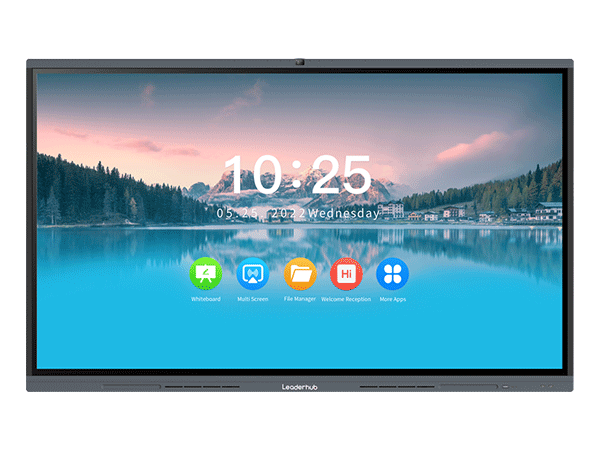Revolutionizing Urban Spaces with Advanced Display Technology

Interactive flat panel displays are playing a pivotal role in driving the transformation of cities into smart, connected and sustainable urban spaces. These innovative display solutions are transforming the way information is presented, shared, and utilized, enabling cities to become more efficient, livable, and environmentally friendly. With their advanced features and capabilities, interactive flat panel displays are paving the way for smarter cities.
Enhancing Communication and Collaboration
Interactive flat panel displays serve as powerful communication tools that facilitate efficient collaboration between city administrators, residents, businesses, and various stakeholders. Through interactive touch screens and intuitive interfaces, these displays enable seamless sharing of information, ideas, and updates. City officials can use these displays to showcase development plans, highlight key projects, and gather public opinions, fostering a sense of community engagement and participation.
Beyond administrative purposes, interactive flat panel displays also promote collaboration among residents and businesses. By providing interactive maps, events calendars, and other practical tools, these displays enable citizens to access and contribute to the city's cultural, social, and economic activities. Public service announcements, real-time transit updates, and emergency alerts can also be displayed, ensuring that vital information reaches the public quickly and efficiently.
Driving Innovation and Efficiency
The integration of interactive flat panel displays in smart cities also fuels innovation and increases efficiency in various sectors. In educational institutions, these displays are revolutionizing classrooms by creating interactive and immersive learning experiences. Students can actively participate in lessons, engage with digital content, and collaborate with classmates in real-time. This technology improves knowledge retention, promotes critical thinking skills, and prepares students for the digital age.
Furthermore, interactive flat panel displays empower city infrastructure with advanced monitoring and control systems. By connecting these displays to sensors and IoT devices, cities can collect real-time data on traffic flow, energy consumption, air quality, and other vital parameters. This data can then be analyzed to optimize resource allocation, enhance decision-making processes, and improve the overall quality of urban life. For instance, intelligent traffic management systems can use this data to automatically adjust signal timings and reduce congestion, improving transportation efficiency and reducing carbon emissions.
Advancing Sustainability and Livability
Interactive flat panel displays contribute significantly to the sustainability and livability of smart cities. Their use in energy-efficient buildings and public spaces helps in reducing the ecological footprint. These displays are equipped with features like automatic brightness adjustment, power-saving modes, and sleep timers, which optimize energy consumption while maintaining optimal user experience. Moreover, by providing interactive access to real-time energy usage information, residents can make informed decisions about their energy consumption and actively participate in energy-saving efforts.
Beyond environmental sustainability, interactive flat panel displays also enhance the overall livability of cities. By providing access to online services, e-governance platforms, and digital amenities, residents can conveniently access a wide range of essential services such as healthcare, education, and entertainment. Additionally, these displays facilitate wayfinding, making it easier for residents and tourists to navigate the city, discover points of interest, and access public transportation.
In Conclusion
Interactive flat panel displays are revolutionizing smart cities by enhancing communication, driving innovation, and advancing sustainability. With their interactive and intuitive features, these displays are empowering communities, facilitating collaboration, and enabling data-driven decision making. As cities continue to evolve and embrace technology, interactive flat panel displays will remain a critical component in driving the development of smart cities across the globe.

